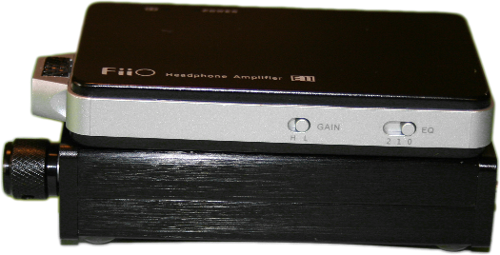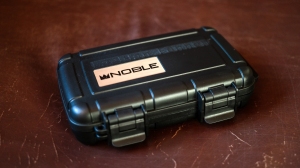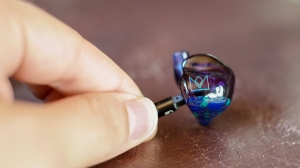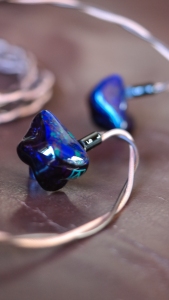These are easily the best earphones I've ever heard. They out-perform both of my older sets of cans. Admittedly, they're older headphones, but they're AKG and Sennheiser cans that were worth equivalent money or better than the Re0s so, to me, that's impressive!
The Head-Direct and Hi-Fi Man brands are one and the same so don't be thrown by the different references. If it says Re0, it's the same earphone regardless of which brand you read on the review.
The Re0s are a 9mm dynamic driver canal phone. They are a simple and plain design which belies their spectacular sound.
The specs don't really jump out:
- 9mm dynamic drivers with neodymium
- 64 Ohm impedance
- 100 dB/1mW sensitivity
- 15 - 22,000 Hz range
Sound Quality
I used to work for a hi-end audio-visual manufacturer and one of the key lessons from my time there was that the first impression of an audio or visual source is not accurate. The TVs and speakers that we often go for first are the most dynamic or bright, but almost never the most accurate. These dynamic sources seem exciting at first, but will quickly become tiring. The natural, true-to-life sources seem dull, flat and boring at first, but in time our body adjusts to these (and we stop comparing them with other sources) and we discover the subtleties and balance that make them truly special. The Re0s are one of those balanced, natural sources so give them a chance when you first get them. Get to know them so they can knock your socks off when you least expect it!!
The sound from the Re0s is pretty close to perfect. Detail is amazing, mids are realistic and bass is present, but never over-stated. The sound is smooth, detailed and never harsh.
On first listen, I was concerned that the Re0s lacked bass. Some reviews also speak about the bass being a bit thin, but I played around with the different tips provided (5 options!) until I found the right ones. That fixed it and the bass has been beautiful ever since. Coincidentally, this happened after some burn-in time so I can't rule out the benefit of burning these in - the debate rages on!
Design
If there's one negative of the Re0s it's their design from a purely aesthetic perspective. In terms of fit and performance, they're right on the mark, but they look pretty cheap. That doesn't mean they aren't well put together. The bodies are metal and the rubber used in the cable is high quality. The plug is high quality and the insulation is tapered so it'll fit any source you can think of. The cable splits at a classy metal junction and the sliding ring to hold the separate L/R cables together is also metal so it's not like they actually ARE cheap, quite the opposite, but they LOOK cheap.
The phones themselves are simple, black painted metal with touches of polished metal. On the back of the phones is a circular area of bare metal and the finish here looks a bit rough, but it doesn't actually effect the earphones so look past that and be pleased that the Re0s are a sleeper that no-one will be drawn to steal (unless they've listened to a pair
).
Comfort
I'm a novice with canal phones, but I find these comfortable. It's important though that you find the right tips. The Re0s come with S, M & L black rubber tips and S & L twin-flange tips. Play around until you find the right one and pay attention to the bass quality. When the bass and sound isolation are best, you've got the best seal.
Something to note here is that pushing canal phones into your ear can create a pressure lock of sorts in the ear canal. Not only can this be uncomfortable, it can also affect the performance of your eardrum and possibly the phone. If you feel pressure, wiggle the earphone until the pressure equalises and then judge the sound and comfort.
Isolation
Again, as a canal phone novice, I have no real comparison, but these block out plenty of noise when I'm on the train or riding my bike so they're good enough for me.
Source Notes
I was concerned when I bought the Re0s that they may not work effectively on my iPod or iPhone without amplification. They do. I love great sound, but I'm realistic about it and don't want to carry around excess equipment. The Re0s are a perfect way to achieve outstanding sound from a simple source like the iPod... BUT... you won't want to use any equaliser adjustments on basic sources (like iPods). Basic sources don't have the amplification circuits to really handle any tweaking of the sound.
Before I got the fit of the Re0s right I was playing around with the bass boost on the iPod and I forgot to switch it off. Later in the week I was disturbed to hear all sorts of sound quality issues from my iPod and actually thought the amplifier circuit was giving up the ghost (it's an old pod). I suddenly realised my mistake and switched off the bass boost - perfect!
The Re0s WILL show up any poor recordings and sources, but the good news is that their magnificently balanced sound means that you shouldn't have to apply modifications to the sound - just enjoy it as the artists intended.
Overall
These phones have everything right where it matters. They've outperformed everything I've listened to, even phones worth more $$$. They don't look flashy, but they sound spectacular (if you get the fit right). I'd recommend these to anyone.

























